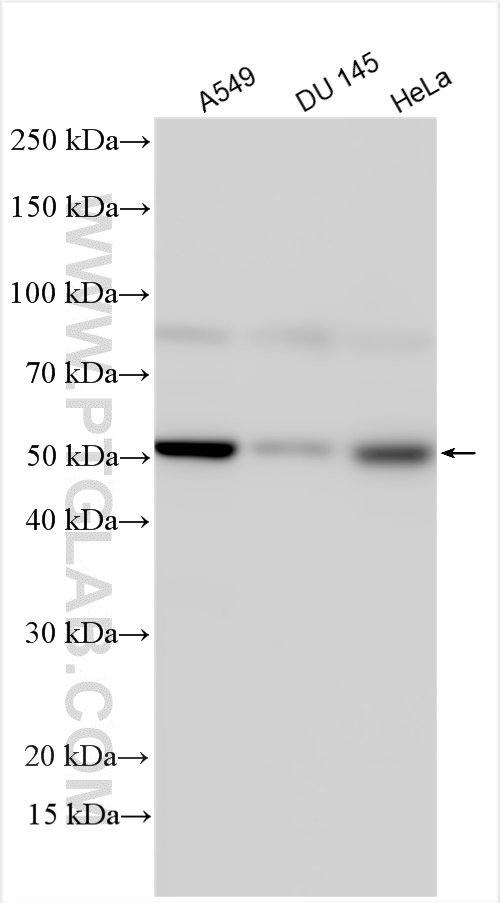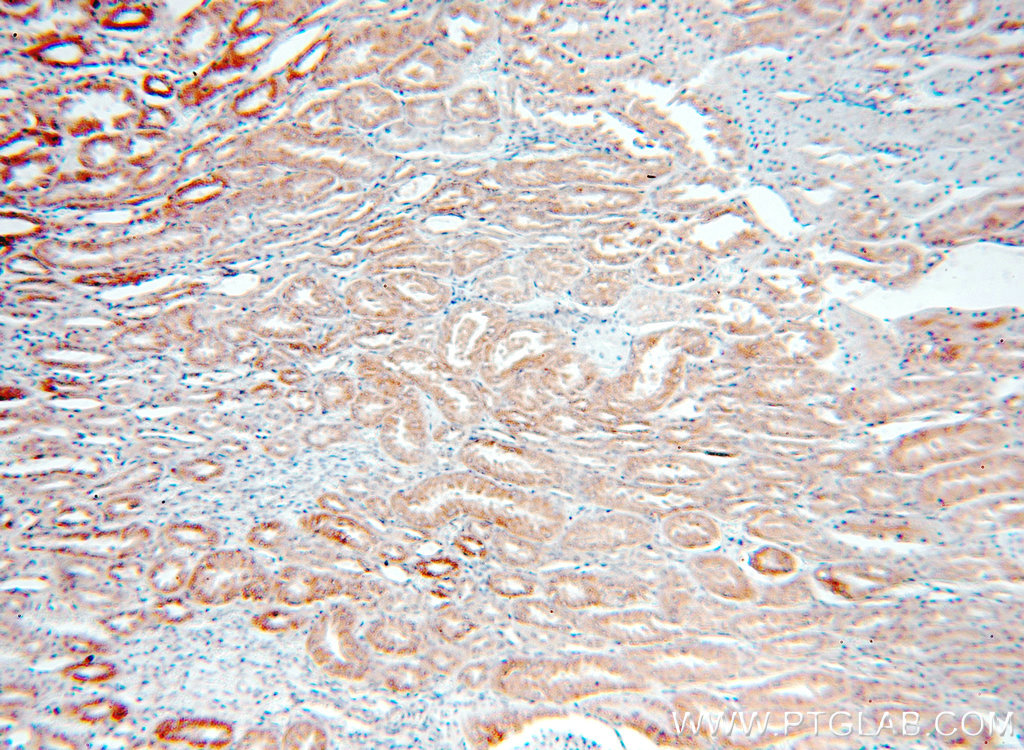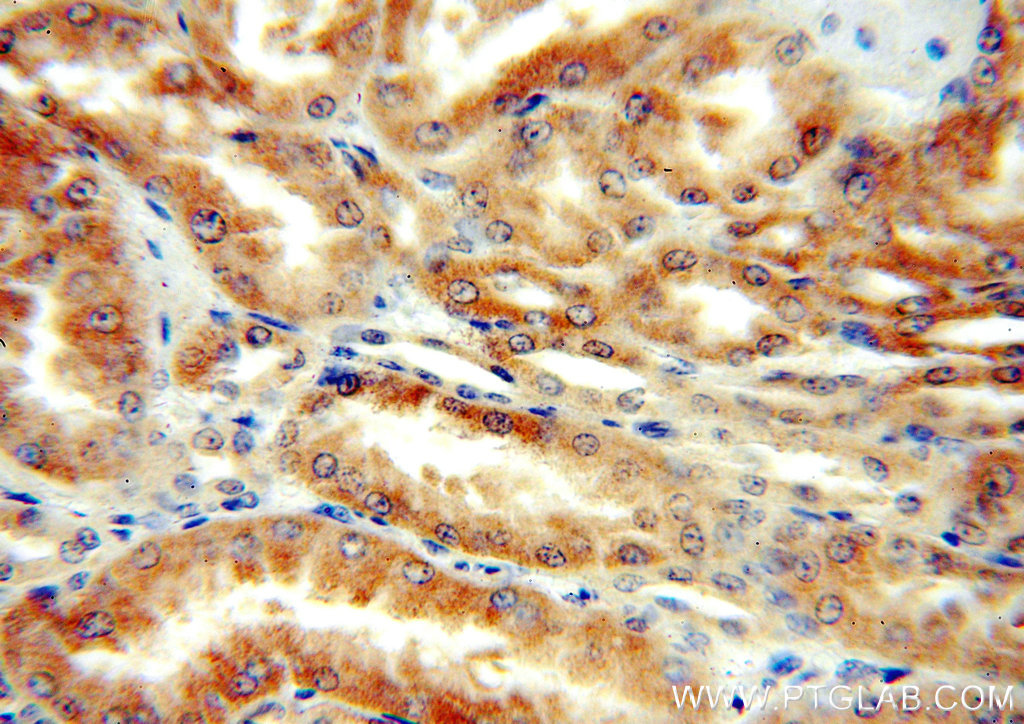验证数据展示
经过测试的应用
| Positive WB detected in | A549 cells, DU 145 cells, HeLa cells |
| Positive IHC detected in | human kidney tissue Note: suggested antigen retrieval with TE buffer pH 9.0; (*) Alternatively, antigen retrieval may be performed with citrate buffer pH 6.0 |
推荐稀释比
| 应用 | 推荐稀释比 |
|---|---|
| Western Blot (WB) | WB : 1:1000-1:4000 |
| Immunohistochemistry (IHC) | IHC : 1:20-1:200 |
| It is recommended that this reagent should be titrated in each testing system to obtain optimal results. | |
| Sample-dependent, Check data in validation data gallery. | |
发表文章中的应用
| WB | See 3 publications below |
| IHC | See 1 publications below |
产品信息
16781-1-AP targets DcR2 in WB, IHC, ELISA applications and shows reactivity with human samples.
| 经测试应用 | WB, IHC, ELISA Application Description |
| 文献引用应用 | WB, IHC |
| 经测试反应性 | human |
| 文献引用反应性 | human |
| 免疫原 | DcR2 fusion protein Ag10208 种属同源性预测 |
| 宿主/亚型 | Rabbit / IgG |
| 抗体类别 | Polyclonal |
| 产品类型 | Antibody |
| 全称 | tumor necrosis factor receptor superfamily, member 10d, decoy with truncated death domain |
| 别名 | CD264, DCR2, Decoy receptor 2, TNFRSF10D, TRAIL R4, TRAIL receptor 4, TRAILR4, TRUNDD |
| 计算分子量 | 386 aa, 42 kDa |
| 观测分子量 | 50-55 kDa |
| GenBank蛋白编号 | BC052270 |
| 基因名称 | DcR2 |
| Gene ID (NCBI) | 8793 |
| RRID | AB_2256181 |
| 偶联类型 | Unconjugated |
| 形式 | Liquid |
| 纯化方式 | Antigen affinity purification |
| UNIPROT ID | Q9UBN6 |
| 储存缓冲液 | PBS with 0.02% sodium azide and 50% glycerol , pH 7.3 |
| 储存条件 | Store at -20°C. Stable for one year after shipment. Aliquoting is unnecessary for -20oC storage. |
实验方案
| Product Specific Protocols | |
|---|---|
| WB protocol for DcR2 antibody 16781-1-AP | Download protocol |
| IHC protocol for DcR2 antibody 16781-1-AP | Download protocol |
| Standard Protocols | |
|---|---|
| Click here to view our Standard Protocols |
发表文章
| Species | Application | Title |
|---|---|---|
Mater Today Bio Ultra-small polydopamine nanomedicine-enabled antioxidation against senescence | ||
Oncogene DJ-1 inhibits TRAIL-induced apoptosis by blocking pro-caspase-8 recruitment to FADD. | ||
Sci Rep STIM1 accelerates cell senescence in a remodeled microenvironment but enhances the epithelial-to-mesenchymal transition in prostate cancer. |


